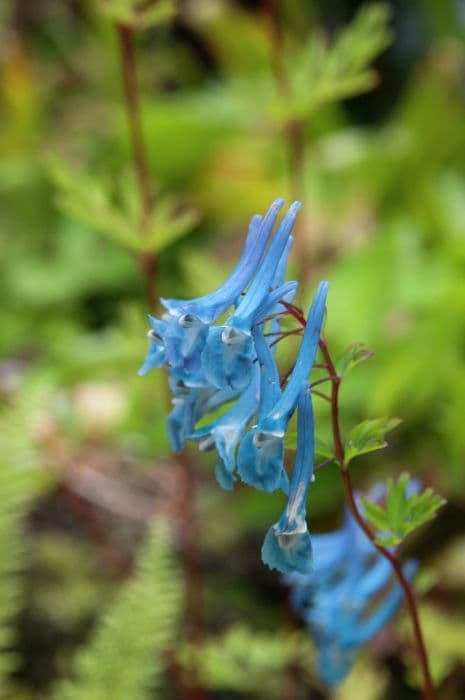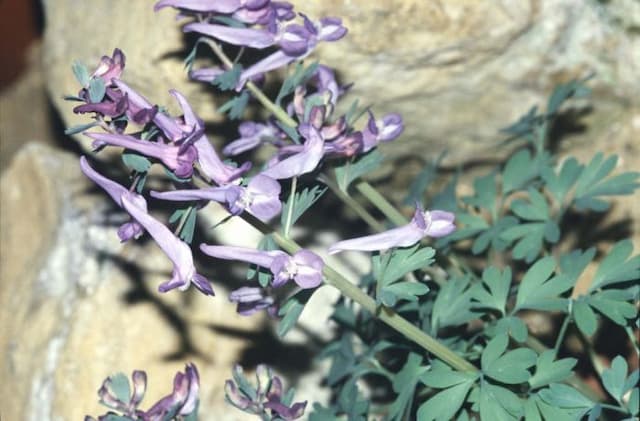Californian tree poppy 'White Cloud' Romneya coulteri 'White Cloud'

ABOUT
A vigorous suckering woody-based perennial with bright, glaucous grey-green, pinnately lobed leaves and cup-shaped pure white flowers 12cm across, with conspicuous deep yellow stamens, over a long period in summer
About this plant
 Names
NamesFamily
Papaveraceae.
Synonyms
Matilija Poppy, California Tree Poppy, Fried Egg Plant, Coulter's Matilija Poppy, Giant White Poppy, White Cloud.
Common names
Romneya coulteri 'White Cloud'.
 Characteristics
CharacteristicsLife cycle
Perennials
Foliage type
Evergreen
Color of leaves
Blue-green
Flower color
White
Height
6 feet (1.83 meters)
Spread
4 feet (1.22 meters)
Plant type
Shrub
Hardiness zones
7
Native area
California
Benefits
 General Benefits
General Benefits- Aesthetic Appeal: The ‘White Cloud’ cultivar of the Matilija poppy provides a striking visual with its large, white flowers and bright yellow centers, enhancing the beauty of any landscape.
- Drought Tolerance: Being native to California, this plant is well-adapted to dry climates and requires minimal water once established, making it ideal for water-conserving gardens.
- Low Maintenance: The Matilija poppy generally requires little care, making it a convenient choice for gardeners seeking a low-maintenance plant.
- Pollinator Attraction: Its blossoms attract pollinators such as bees, butterflies, and birds, supporting local ecosystems.
- Architectural Structure: With its tall stems and large leaves, the Matilija poppy can provide an interesting architectural element to garden designs.
- Privacy Screen: When grown in clusters, it can function as an informal privacy screen or windbreak due to its height and foliage density.
- Soil Erosion Control: The deep roots of Romneya coulteri can help stabilize soil and prevent erosion on slopes or in areas prone to degradation.
- Seasonal Interest: Romneya coulteri ‘White Cloud’ flowers in the summer, offering seasonal interest when many other plants may not be in bloom.
 Medical Properties
Medical PropertiesThis plant is not used for medical purposes.
 Air-purifying Qualities
Air-purifying QualitiesThis plant is not specifically known for air purifying qualities.
 Other Uses
Other Uses- Botanical Illustration Subject: Due to its dramatic flowers, Matilija poppy is a popular subject for botanical artists and illustrators seeking to depict native California flora.
- Photography Inspiration: The striking appearance of Matilija poppy when in bloom makes it an attractive subject for photographers, especially those interested in natural landscapes or macro photography.
- Garden Focal Point: Because of its large, showy flowers and size, Matilija poppy is often used as a focal point in garden design, drawing the eye to a particular area of the landscape.
- Educational Tool: Matilija poppy can be used in educational settings such as botanical gardens to teach about native plants and their role in local ecosystems.
- Cultural Symbol: Matilija poppy is sometimes used as a cultural symbol to represent the beauty and resilience of the California landscape, featuring in various art forms and local festival motifs.
- Natural Dye: Although not commonly known for dying, the petals of Matilija poppy have been experimented with for producing yellow to orange shades in natural dye processes.
- Screening Plant: With its dense foliage and height, Matilija poppy can be planted in groups to create a natural screen or privacy barrier in gardens and landscapes.
- Wildlife Habitat: Matilija poppy can be part of a habitat garden, providing shelter and potential food sources for native insects and birds.
- Theme Gardens: Matilija poppy is a suitable addition to a white-themed garden or a moon garden where its blooms can reflect moonlight and create a luminescent effect at night.
- Artistic Inspiration: The unique beauty of Matilija poppy often inspires artists to create paintings, ceramics, textiles, and other art pieces that feature or are inspired by the plant.
Interesting Facts
 Feng Shui
Feng ShuiThe Matilija poppy is not used in Feng Shui practice.
 Zodiac Sign Compitability
Zodiac Sign CompitabilityThe Matilija poppy is not used in astrology practice.
 Plant Symbolism
Plant Symbolism- Resilience: Known as the 'Matilija Poppy,' Romneya coulteri 'White Cloud' can thrive in tough conditions, symbolizing the ability to endure and flourish despite challenges.
- Peace: With its large white flowers that resemble fried eggs, the Matilija Poppy conveys a sense of calm and serenity, much like the color white is often associated with peace.
- Beauty and Simplicity: The Matilija Poppy's simple yet striking appearance, with its pure white petals and bright yellow centers, represents the beauty in simplicity and the elegance of minimalism.
- Rarity and Uniqueness: As an uncommon garden plant, the Matilija Poppy symbolizes uniqueness and the preciousness of rare beauty.
 Water
WaterThe Matilija Poppy requires moderate watering; during active growth in spring and summer, it should be watered deeply once a week, providing about one to two gallons per plant. In the fall and winter when the plant is dormant, reduce watering to once every two to three weeks, keeping the soil slightly moist but making sure it does not become waterlogged. Established Matilija Poppies are drought-tolerant and can withstand dry periods; however, consistent watering will encourage better bloom production.
 Light
LightThe Matilija Poppy thrives in full sunlight and should be planted in a location where it can receive at least six hours of direct sun each day. This plant prefers an open area without shade to ensure it gets ample light, which is essential for vigorous growth and prolific blooming.
 Temperature
TemperatureMatilija Poppies are hardy and can tolerate a temperature range from about 20°F to 100°F. They prefer a mild climate with temperatures ideally between 60°F and 85°F for optimal growth. Extreme cold or heat outside this range can adversely affect the plant's health.
 Pruning
PruningPruning the Matilija Poppy helps to maintain its shape and encourage more blooms. Prune back the plant hard in late autumn or early winter after flowering has finished and it begins to die back, leaving about six inches of the stems above ground. Removing spent flowers during the blooming season can also promote further blooming. Pruning is typically done annually.
 Cleaning
CleaningAs needed
 Soil
SoilThe Matilija poppy prefers a well-draining soil mix, composed of sand, loam, and compost, with a slightly acidic to neutral pH of around 5.5 to 7.5 for optimal growth.
 Repotting
RepottingMatilija poppies are not commonly grown in containers and do not need regular repotting; they are best planted directly in the ground.
 Humidity & Misting
Humidity & MistingMatilija poppies thrive in dry to average humidity conditions typical of their natural habitat and do not require high humidity levels.
 Suitable locations
Suitable locationsIndoor
Not suitable for indoor growth; needs full sun.
Outdoor
Plant in full sun, well-draining soil, minimal water.
Hardiness zone
7-10 USDA
 Life cycle
Life cycleThe Matilija poppy begins its life cycle when seeds are dispersed by wind or water after the dry fruit capsules split open. Upon successful germination, which may require fire or mechanical disturbance to break seed dormancy, a seedling emerges and establishes a deep taproot. As the plant matures, it grows a clump of blue-green foliage and sends up stems that can reach up to 8 feet tall. During late spring to early summer, the Matilija poppy enters its flowering stage, producing large white blossoms with a yellow center, resembling fried eggs. After pollination, primarily by bees, it sets seed within capsules that will dry and release seeds for the next generation. Throughout its life, the plant can spread vegetatively through rhizomes, forming colonies and continuing its life cycle with new shoots in subsequent seasons.
 Propogation
PropogationPropogation time
Spring to Summer
The Matilija poppy, known scientifically as Romneya coulteri 'White Cloud', is a perennial plant that can most commonly be propagated through root division. The ideal time to carry out this method is in the late fall or early spring when the plant is dormant. To propagate by division, carefully dig up an established clump and separate the roots into sections. Each section should have several shoots or buds. Replant these divisions at the same depth they were growing previously, allowing them space to spread out. Careful handling is crucial to prevent excessive damage to the roots. Water the newly planted divisions thoroughly to establish them in their new location.









